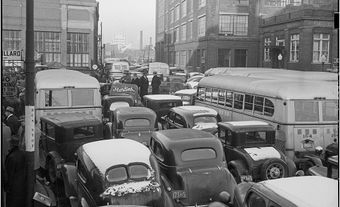
Saskatchewan Doctors' Strike
In 1959, Premier T.C. DOUGLAS announced his intention to provide medical care insurance, based on pre-payment, universal coverage, quality service and government administration, and through a scheme acceptable to both doctors and patients. The election of 1960 was fought on this issue, the doctors campaigning against it. A commission, established to recommend a plan, reported in Sept 1961. Members of the Saskatchewan College of Physicians and Surgeons met with the government, stating that they could not work with a compulsory, government-controlled scheme.The Saskatchewan Medical Care Insurance Bill was introduced in the Legislature 13 Oct 1961, and received royal assent 17 Nov 1961, after Woodrow S. LLOYD had replaced Douglas as premier. It was to come into force April 1, but this was amended, later, to 1 July 1962. While the bill was still being debated, the college emphasized its refusal to co-operate with the scheme, claiming that it would bring regimentation and would interfere with the doctor-patient relationship. At a meeting in May 1962, the doctors resolved not to practise should the Act come into force.
In Regina, a group of mothers formed a committee to support their doctors. Similar committees were organized throughout the province, encouraged by doctors and joined by political opponents of the government. These KOD (Keep Our Doctors) Committees, with support from the media, launched a well-organized campaign against the government and the medicare plan. Rallies, petitions, panels and advertisements raised the emotional climate to a white heat.
On 1 July 1962, when the Act came into force, most doctors closed their offices, some took holidays or educational leave, while some staffed emergency centres. A few left the province for good. The Medical Care Insurance Commission brought doctors from Britain and encouraged others to come from the US and other parts of Canada to meet the emergency. Local citizens groups organized medical clinics and hired doctors to attend them.
By mid-July much of the KOD support had dissipated. Some doctors were returning to work; the force of the strike was spent. Lord Taylor, a physician who had been active in introducing Britain's health-care scheme, was brought to Saskatchewan by the government. He acted as mediator and the 2 sides signed an agreement in Saskatoon 23 July 1962.
On 2 Aug 1962, amendments to the Act were passed allowing doctors to practise outside the plan. Payments by the government would be 85% of the college fee schedule, as was common in doctor-sponsored insurance schemes. In addition, the number of doctors on the Medical Care Insurance Commission was increased to at least 3. The powers of the commission were more limited, and certain other sections and phrases were amended or omitted to relieve the doctors' fears of interference.
The doctors returned to work after the Saskatoon agreement, but hostilities long remained. Patients resented their doctors' desertion, while doctors objected to government involvement in medical care. Nevertheless, a 1965 survey found that most doctors favoured continuing the plan.

 Share on Facebook
Share on Facebook Share on X
Share on X Share by Email
Share by Email Share on Google Classroom
Share on Google Classroom


